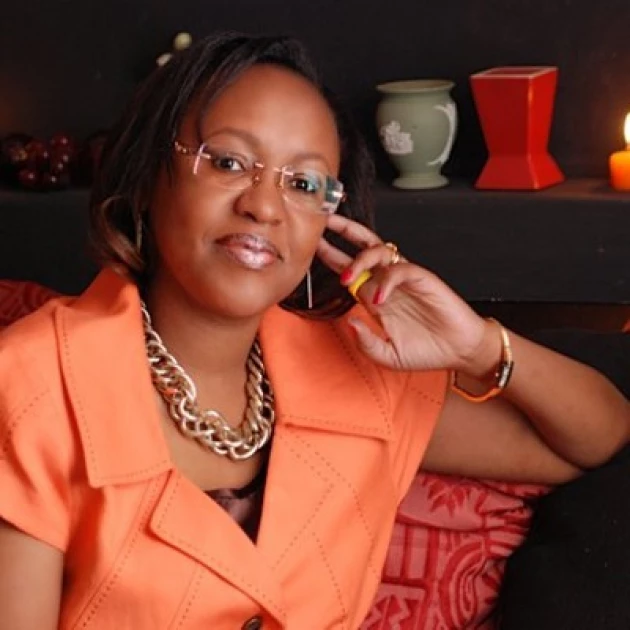OPINION: Dear millennials, it’s up to you…

Nairobi (AFP) - The statue of the late Kenyan Minister of Justice Tom Mboya, is adorned with a placard reading "Reject not Amend" ahead of a planned demonstration called after a nationwide deadly protest against a controversial now-withdrawn tax bill, in Nairobi, Kenya.

Audio By Vocalize

If you take a stroll down the Central
Business District of Nairobi, you will find, just a few meters from the
National Archives, a monument in honor of one of our nation’s most remarkable
heroes.
Handcrafted by the highly-gifted late
sculptor, Oshottoe Ondula, the monument depicts a handsome, smiling man gazing
coolly into the horizon, right arm outstretched as if in friendly exhortation.
He is dressed in the flowing West African agbada highly favored across the
continent by stylish gentlemen of a certain social stratum. A plaque on one
side of the monument's glossy façade reads: ‘Shujaa Thomas Joseph Odhiambo
Mboya, 1930-1969.’
A few weeks ago, in what was almost certainly
an award-worthy snapshot, a photojournalist captured a striking image of the
famous statue. In the photo, Mboya’s sculpted face is seen partially obscured
by a somewhat tatty facemask and tight anti-teargas goggles; a black backpack
hangs oddly over his right shoulder while a water bottle and empty teargas
canister dangle from his outstretched hand. Tied to his arm, and printed in
capital letters, a large placard announces: ‘Reject, Not Amend.’ The photo,
captured at the height of Kenya’s fiery anti-Finance Bill protests, was a
resounding message from our thoroughly exasperated ‘Gen Zs.’
Tom Mboya was born on August 15th, 1930, at a
sisal plantation near present-day Thika. He was the eldest child of Leonardus
and Marcella Ndiege, both of whom worked as farm laborers for colonial settler
Sir William McMillan on his expansive estate. When Mboya was 9 years of age,
Ndiege sent him off to school, choosing Kabaa Mission School in Machakos for
him. Here, young Mboya would take his first classes under the sparse branches
of rugged trees and trace his ABCs with dry sticks on the ground.
When Mboya was 12, his father transferred him
to a school in Nyanza, the family’s ancestral province. But the long distance
meant that the boy could only visit his parents and siblings every three
months. Years later, writing in the March 1959 edition of ‘Africa Today,’ Mboya
would share some of his struggles as a school-going lad: “Sometimes I made the
3-day journey back to the plantation where my father worked by train, and at
other times I walked 72 miles (115km) a day, from dawn to nightfall, with no
food to my location [rural family home]...”
Mboya eventually had to drop out after
completing secondary school, as his father could not afford to take his
education any further while also paying fees for the younger children. He thus
gave up the prospect of studying the Cambridge A levels and proceeded to train
as a sanitary inspector at the age of 18. It is perhaps no wonder that he would
later become extraordinarily passionate about providing students with good
education opportunities.
Mboya was, by all accounts, an exceptionally
charming and debonair young man; he was also endowed with a masterful command
of language and possessed the fine oratory skill that has forged many a
successful political career. This, combined with his undeniable brilliance, endeared
him to audiences across the globe.
Unsurprisingly, then, while on a trip to
America in April 1959, Mboya would find a keenly attentive audience in a select
group of well-respected luminaries. Vice President Richard Nixon would grant
him an hour-long sit-down at the Department of State in the nation’s capital;
Senator John F. Kennedy would host him at his family’s lavish waterfront home
in Hyannis Port, Massachusetts. The world’s first black Nobel Laureate, Ralph
Bunche, would arrange a sumptuous luncheon at the compound of the United
Nations, and investment banker David Rockefeller, of the billionaire
Rockefeller family, would host an elegant dinner in his honor.
But he had not traveled to the United States
for his own benefit.
Having recently been elected Nairobi’s
representative to the country’s legislature, LegCo, and knowing that most young
Africans lacked proper opportunities for higher education, Mboya had traveled
to the US for a very specific purpose - to seek university scholarships for his
fellow Kenyans. His trip was a resounding success. The five grueling weeks he
spent crisscrossing the US realized enough funds to send close to 100 students
to both America and Canada. And in September 1959, barely three months after
his trip, 81 enthusiastic young Kenyans were airlifted by a chartered flight to
New York to begin their studies. Mboya had met his goal.
A year later, Mboya would be featured on the
cover of the world-famous Time Magazine. Beneath his image, the words
“Circulation of over 3,000,000” would indicate a staggeringly large audience at
a time when the 10-word telegram was the chief means of cross-border
communication and Twitter was fifty years in the future. His face was now
recognizable worldwide. There was greatness in this man.
Meanwhile, among the students was a stunning
beauty named Pamela Odede, daughter of former LegCo member Walter Fanuel Odede.
She would soon become Mboya’s bride. A beautiful photo of the courting love
birds, reportedly shot while on a visit to Rusinga Island, shows the shy
bride-to-be reposing lovingly in the arms of the ever-spiffy Mboya. And a
well-preserved newspaper clipping dated May 2, 1960, announces to all: “Pamela
Odede, an exchange student at Western College for Women in Oxford, Ohio, is
engaged to marry Tom Mboya, dynamic, native leader of Kenya, Africa.” A few
hearts must surely have been broken.
By 1960, only a year after the first airlift,
US universities had become quite keen to have African students on board.
However, even though the institutions provided much-needed scholarships,
prospective students still had to raise their airfare, presenting Mboya with an
unexpected dilemma. Quite fortunately, Mboya had by this time forged a close
brotherly friendship with a wealthy 33-year-old American industrialist, William
X Scheinman, who had been an enthusiastic participant in the first airlift and
was eager to see the next phase succeed. So, in July 1960, Scheinman
provisioned his personal jet and flew Mboya to Cape Cod, Massachusetts for a
private meeting with Senator John F. Kennedy. At stake was the future of
another 250 students.
Kennedy meanwhile was now running for US
president and had emerged as the frontrunner for the Democratic Party. After a
series of vigorous discussions with Mboya and his team, the Senator agreed to
grant USD 100,000 to Mboya’s project - a tidy sum in those days - drawing the
funds from his family’s well-endowed charity. But, despite Kennedy’s admirable
efforts to remain an anonymous donor, a deluge of publicity quickly ensued.
Being an election year, all eyes were on the two contending presidential
candidates and some of the Senator’s opponents attempted to paint his donation
as a hollow campaign gimmick. But the publicity only worked in the Senator’s
favor.
The African American community, in
particular, had become well-informed of Kennedy’s role in helping the African
students, and this, some say, may have tipped the balance in the elections that
year. Kennedy bagged 68 percent of the community’s vote, upping his margin in
an extremely tight race, and went on to become the 35th president of the United
States.
Mboya’s airlifts carried on until 1963 and
eventually enabled at least 750 Kenyans to earn a higher education abroad. But
perhaps the true measure of his brainchild’s success was the fact that many
later returned to take up crucial roles in post-colonial Kenya, as he had
hoped.
Some of those airlifted were: renowned
academic and diplomat Prof. Washington Aggrey Okumu, who at the time of the
1959 airlift was aged 23; future Nobel Prize Laureate Prof. Wangari Maathai who
was aged 20 in 1960; Nobel Peace Prize nominee Prof. Miriam Were, also aged 20
in 1960; Kenya’s sixth vice president Prof. George Saitoti, aged 18 during the
1963 airlift; highly-respected journalist and literary titan Philip Ochieng,
aged 22 in 1960, and Mutu Gethoi, senior radio journalist and later official
biographer of Njenga Karume and Jeremiah Kierieni, among several other
illustrious Kenyans.
In studying great men and women, I have
become fully persuaded that in every generation, greatness is deposited, by the
Almighty, in a handful of chosen vessels who go on to shake our world with the
plans He has so diligently crafted for us. Mboya in my view was one such
vessel.
A letter written to him in the 1950’s by his
friend Scheinman puts it thus: “History has placed a particularly heavy burden
on your shoulders, because it would seem that the manner in which the situation
in Kenya works out will also determine the future of all of East, Central, and
South Africa...”
Mboya’s powerful legacy is a truly admirable
testament to a lad who once had to walk more than 100km to get home for his
school holidays. But the afternoon of Saturday, 5th July 1969 will forever be
stamped in our nation’s collective memory, for it was on this day and hour that
the life of Thomas Joseph Odhiambo Mboya was suddenly snuffed out, way too
soon, by an assassin's bullet. Mboya was killed as he unsuspectingly stepped
out of a pharmacy along present-day Moi Avenue, just a few weeks before his 39th
birthday. His monument stands just a few meters from where he met his death.
Earlier this year, unrelenting taxation and
devastating robbery of our nation’s coffers drove a protesting Gen Z generation
livid, onto that very street. The young protesters undoubtedly carried the
sentiments of citizens long tired, nay, exhausted, by never-ending corruption
and numerous scandals, such as the Ksh.1.2 billion allegedly nicked from the
NSSF, a corporation that Mboya had helped establish. And so, in true Gen Z fashion,
our hero was promptly adorned with a facemask and goggles, symbolically
enjoining him in the struggle.
Perhaps what is needed, many now believe, is
a complete overhaul of our system of governance; one that can only be effected
by a generation of young, corruption-intolerant, tribe-free Kenyans reminiscent
of Mboya and similar independence-era leaders.
Mboya was just 28 years old when he almost
single-handedly established the hugely successful airlift program that
transformed the lives of hundreds of Kenyans, and helped mould the future of
our country. Had he been born just about half a century later and been alive in
our current time, no doubt he would have been an outstanding member of the
generation, known today as Millennials, who were born between 1981 and 1996 and
are presently aged 28 to 43.
It is worth noting, too, that Kenya’s first
post-independence cabinet included several leaders in their 30s and early 40s.
Even though they were by no means perfect, these and other youthful leaders made
tremendous contributions to our nation's advancement. Their youthful enthusiasm
and earnest idealism were crucial in helping reset the antiquated and highly
reprehensible colonial system. And in recent weeks, as the discourse on our
nation’s myriad afflictions has continued to persist, it has become abundantly
clear that our current paradigm must most assuredly shift.
So,
go right ahead and take one step forward if you are of the feisty and
much-loved Gen Z age bracket. But take two bold ones if you’re a Millennial.
The time for your generation to serve our nation has come.
[Paulie Mugure Mugo is a published author and
a co-founder of Eagles Leadership Network (ELN), an initiative that trains and
equips upcoming leaders in the area of ethical governance.]


Leave a Comment